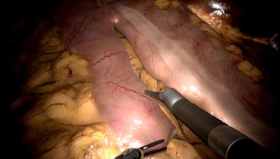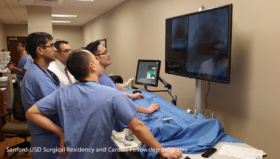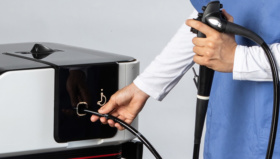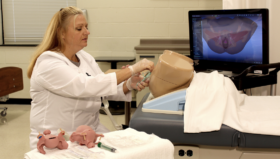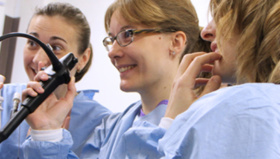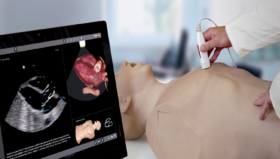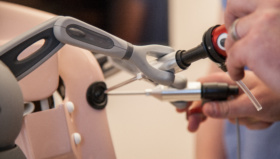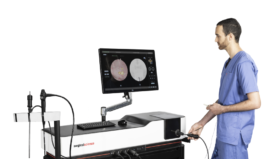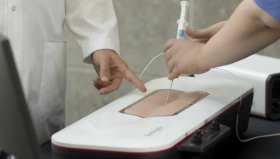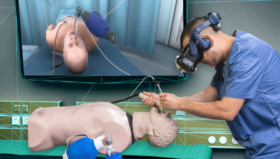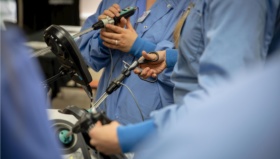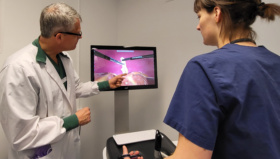How To Integrate Simulation Into Surgical Training
Laparoscopic simulators are a great tool to teach and assess surgical skills. They can provide a validated turnkey curriculum, reducing administrative and management demands, and give trainees the opportunity to improve their surgical skills. Dr. Hulda Einarsdottir, the Director of Surgical Simulation at Yale University School of Medicine, expains how she successfully incorporated VR simulation training into her residency program.
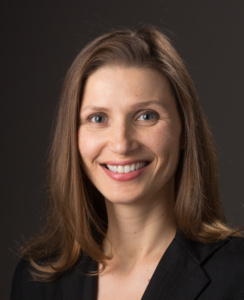
Why did you want to include simulation training into your curriculum?
Simulation training helps residents practice basic surgical skills so they can perform entire surgical procedures before they step into the operating room. The training is important because it helps students learn surgical skills while avoiding the ethical concerns of training on real patients. VR simulator-trained students perform real surgery with more confidence, less operative time, and increased accuracy.
VR simulator-trained students perform real surgery with more confidence, less operative time, and increased accuracy.
What was your first step to integrate VR simulation training?
As an assistant professor of surgery I understood the training potential of simulators. But when I first started as the Director of the simulation center, it was equipped with outdated LapSim simulators, old Endoscopic simulators and simple box trainers. In my new role, I was required to bring a fresh perspective to the center, so I only accepted the position on the condition that Yale upgraded their simulation equipment!
What simulators did you upgrade to?
We upgraded to two new LapSim simulators, we remained with Surgical Science as I was very happy with them. We made the leap from non-haptic to haptic feedback. Haptic simulator technology provides users with sensory feedback as they train, so students experience the sensations of pulling, pushing and resistance.
And how did you incorporate the simulators into your own program?
When the new LapSims arrived, I tested all the simulation exercises to work out their benefits and how to use them to their full potential. I also reached out to Surgical Science’s customer support. We talked together about my objectives, and they identified additional resources—particularly the LapSim Certification Program —to help me do what I wanted to do.
So, you adapted the LapSim Certification Program to suit your own needs?
Yes, the certification program provides a validated curriculum for residents in general surgery. It establishes student proficiency in areas such as hand-eye coordination, and depth perception. And that’s where I got the idea to simplify my approach to our program. The LapSim Certification Program was already a validated curriculum, so it made sense to not reinvent the wheel. Instead, we simply built on this existing foundation and Americanized it. And I branded our program with a catchy name, LapKey.
How did you develop your surgical curriculum?
In the beginning, the list of exercises was very ambitious, it included laparoscopic skills using box trainers, timed surgical simulation exercises, and endoscopy training. It was a hefty program, and just became overwhelming for the residents. I learned the hard way that integrating simulation training into my program meant scaling down and simplifying the requirements. Today, my LapKey program has been refined with exercises that are individualized for each residency year. It is work in progress and I’m constantly looking to improve it.
Were there certain exercises you prioritized?
I wanted the residents to learn basic knot tying and basic laparoscopic skills, and I wanted to evaluate their progression. These were completed on the LapSim simulator, so the students could be rated and evaluated. Our LapKey curriculum tells me how well each student has scored and whether they have passed, and the interns who successfully completed the training earned a LapSim certificate!
Any other advice you’d like to give to residency program directors?
The LapSim Certification Program is definitely a great resource for residency programs and the ability to collaboratively tailor the curriculum was an important aspect to my success. Also, Surgical Science’s collaborative support was especially valuable. It is important to know that there is help available to understand the program capabilities and help develop a surgical training program.
